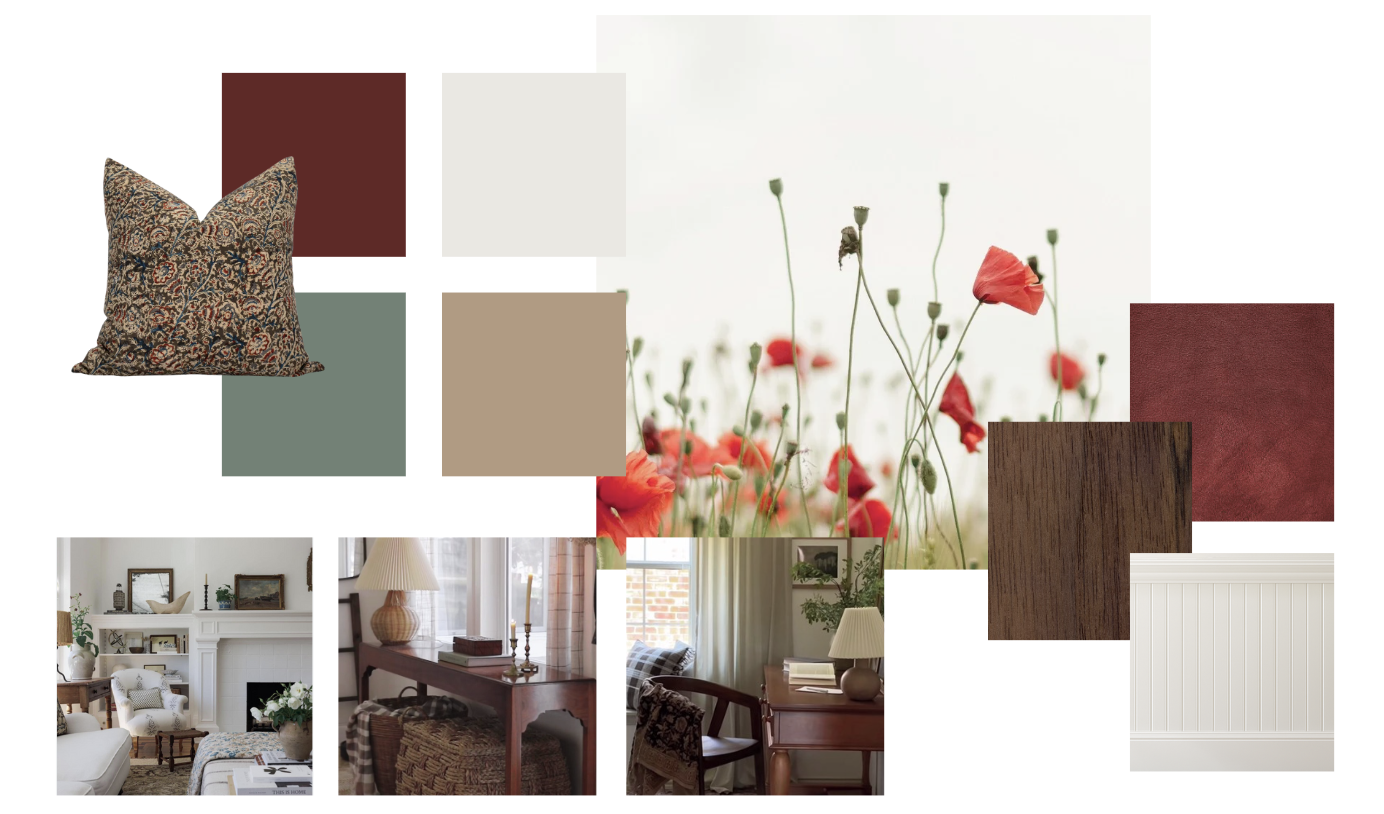Designing a Home Office That Inspires
For a room I spend over 40 hours a week in, my home office has felt like anything but inspiring. It’s been a bland, somewhat neglected space that often turns into a dumping ground for anything without a proper home. And as someone who works remotely full-time, that kind of environment just isn’t cutting it anymore. It doesn’t reflect who I am, how I work, or what energizes me creatively. Honestly, even the Zoom background is kind of a disaster.
So I decided it’s time to change that.
This home office redesign isn’t about going all out with a massive renovation. It’s more about intentionally creating a space that feels like me. I want it to be cozy and classic, with personality and purpose. A space that makes me feel good every time I walk into it, whether I’m jumping into a strategy meeting or just sipping coffee and answering emails.
The Vision: New Traditional with a Hint of Beach Cottage
The overall style I’m going for is what I would describe as new traditional with a subtle nod to beach cottage vibes. We live near a lake and have access to a beach in our neighborhood, and I want the space to reflect that calming, collected feel without leaning into coastal clichés (No seashells or driftwood signs here).
Instead, I’m aiming for a timeless foundation with layers of charm. Clean lines, soft textures, and a little vintage soul. Something that feels elevated but still warm and lived-in. I want the room to feel fresh and classic, but not too formal. Just enough polish to make it feel intentional, and just enough comfort to make it feel like home.
What’s Inspiring the Redesign?
Putting together the style guide helped me clarify what I really want the space to feel like. Here are the main themes I’m leaning into:
Light and bright
The room doesn’t get a ton of natural light, so choosing a palette that helps open it up is a priority. I’m drawn to warm whites and soft neutrals that reflect light and create a peaceful backdrop.
Classic but personal
I want the bones of the room (things like beadboard wainscoting, trim, and lighting) to feel timeless. But I also want to mix in personal touches, like a favorite vintage find or a color that speaks to me, to keep it from feeling too buttoned up.
A pop of red
One of my favorite pieces we already own is a red leather armchair we got over a decade ago. It came from a local Hollister store when they were getting rid of furniture, and it’s this perfect deep red that feels rich and classic. I’ve been holding onto it for years without a real place for it, and now I want to make it the heart of the room. So my challenge is to build a design around it that still feels light and neutral, but with little hints of red throughout to tie it all together.
Mixed materials
I love the idea of layering old and new. Think: an antique desk with a modern lamp. A vintage rug paired with a sleek light fixture. Linen, warm woods, and brushed brass. I want the textures to feel collected and intentional.
Color accents
In addition to the red chair, I’m also playing around with the idea of adding in complementary colors like deep green or muted teal. Not in huge ways, but maybe through artwork, accessories, or even a throw pillow or two. I want the space to feel grounded and cohesive while still having dimension.
The Plan: One Step at a Time
Rather than trying to buy everything at once, I’m letting this design come together slowly and intentionally. The first piece I’m hunting for is a desk. I have a very specific silhouette in mind (something with character and vintage charm) so I’m checking Facebook Marketplace often to see what pops up. Not only is it much more affordable than buying new, but I also love the idea of giving an older piece a second life.
Once I have the desk, I’ll be looking for a dresser or credenza that complements it. Something that adds storage but also anchors the room and gives it a more finished feel. I want pieces that feel like they belong together even if they weren’t bought as a set.
After the main furniture is in place, I’ll be installing beadboard wainscoting to add architectural interest to the walls. I want to keep the paint color soft and light to help brighten the space, especially since the room tends to be on the darker side. The beadboard will add a traditional touch that brings the whole look together, and it will give the room that subtle coastal cottage nod without being too literal.
What’s Next and What I’ll Be Sharing
I’ll be documenting the process as the room comes together—from sourcing vintage pieces to choosing paint colors, installing beadboard, and layering in the final details. It might take a little time, especially since I’m searching for secondhand items, but I’m okay with that. I’d rather take my time and create something meaningful than rush to fill the space.
If you’ve ever done a home office makeover or found a hidden gem on Marketplace, I’d love to hear your tips. And if you’re into mood boards or curious about creating a workspace that feels more like you, I’ll be sharing more behind-the-scenes in the coming weeks.
Here’s to finally making this office a space I love to be in.




